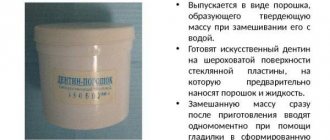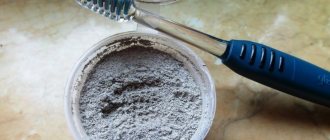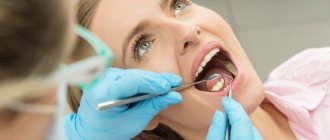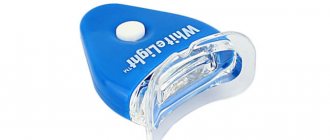It is a pity that not everyone in our world is naturally blessed with beautiful and straight teeth. Many people resort to considerable effort and great expense in order to have a more or less aesthetic smile. After all, uneven teeth are not only unsightly in appearance, but also cause serious changes in the bite, which in turn leads to various diseases. Of course, only an orthodontist can perfectly straighten the teeth, for example, by installing a braces system. People often ask whether it is possible and, if so, how to make braces at home?
More recently, people were embarrassed to wear braces. They considered this system ugly and unaesthetic. Therefore, even when talking, they tried to cover their mouth with their hand. Today you can notice completely different behavior. Braces are considered not only a necessary device for straightening teeth, but are also trendy devices that add a certain zest to a person. Now people are proud of the braces on their teeth and show them off to everyone.
Today you can often find a variety of information about home teeth straightening. Let's try to figure out how this is done.
To be objective, let’s say right away that it is possible to create braces at home, but you won’t be able to correct your teeth with home braces, but you can add some shock value to your image. Homemade braces are good to wear to a disco or to a photo shoot.
Bracket - what is it?
In dentistry, this is the name for a fixed dental prosthesis intended for orthodontic purposes. Each such device serves a specific purpose, predetermined by the doctor. It can straighten crooked teeth and hide the voids between them. They often use additional devices such as locks, springs or elastic chains. This allows you to give your teeth the correct shape.
Important: Self-regulating mechanisms are used today to fix braces.
Instead of ligatures, as before, elements for fixation are used. Thus, much less time is spent on their installation. And the main thing is that if fixation is lost, it can be corrected independently. Fast and painless.
The principle of operation of bracket systems
Human teeth can move independently, and this happens throughout the entire life cycle. They are not firmly attached to the jaw. Displacement of teeth can occur during their eruption, during treatment, due to certain efforts, especially prolonged pressure. Such loads are also possible under normal conditions. That is, when eating and chewing solid food, a gradual displacement of the teeth is observed.
Over time, the dentition loses its shape, the teeth become crooked, and gaps appear. All this can be corrected only by installing braces. They allow you to restore the position of your teeth and return them to their original position. This is possible thanks to directed pressure. But it must be constant and long-lasting. With the help of braces, the tooth is pressed into the bone or, on the contrary, squeezed out. They are also able to change the inclination of teeth in any direction.
If there are gaps between your teeth, dental retainers will fill them. They will tighten the teeth, and if the retainer is worn for a long time, this condition and location will become permanent. That is, the problem will be completely eliminated. Braces are an effective method of dealing with any changes in the position of teeth in the human oral cavity.
Veneers are an alternative, but not an analogue of braces
What else can be used instead of braces? For example, veneers are thin plates of composite or ceramic, which are made from personal impressions for each patient and applied to the cutting edge and the front surface of the tooth. Unlike braces, veneers do not change your bite by moving your teeth. They only mask uneven teeth, chips, and large interdental spaces, essentially performing an aesthetic function. In addition, veneers protect teeth from damage. The installation of veneers can be recommended for adult patients who do not want to correct their bite with braces, but dream of a beautiful smile and straight teeth. It is important to consider that when installing veneers, the dentist must grind down the tooth, and this process is irreversible.
General idea about fake braces
Fake braces are structures that look like an orthodontic system. They are made independently or bought ready-made.
Plastic and various metals are used for manufacturing. False structures are used to create a fashionable image, at themed events, and for photo shoots.
History of origin
For the first time, fake braces began to be worn in Southeast Asia. The fashion for them was introduced by such stars as Andiga Kangen, Earn The Star, Gwen Stefani. They are also associated with the aggressive “dek wehn when” motorbike subculture.
Counterfeit products are designed to create the image of a rich person. For example, the cost of real structures in Bangkok is more than $1,000. This amount is equal to half the annual income for most residents of the country.
A huge demand for products has created a black market. On it, fake systems cost about $100.
The fakes turned out to be life-threatening. After the death of teenagers in Thailand, their sale is prohibited by law.
Violation is punishable by 6 months in prison and a $1,600 fine.
But some enterprising young people are not afraid of statistics, and they resort to creating beautiful dental jewelry on their own.
Conclusion
Installing braces is a complex multi-stage process that requires precision, high qualifications and professionalism from the dentist. Different brace systems have differences in installation. To ensure that the procedure is quick and comfortable, it is important to choose a clinic with a good reputation. Leonid Gorbunov's dentistry employs responsible orthodontists with extensive experience, so the effectiveness of treatment is guaranteed.
Installation video
Posted by:
Instructions for making braces
How to make braces? Not very difficult. You can make devices from available items.
Here is a list of materials that will be needed during the process:
- Large size paper clips.
- Wire.
- Paper plate or other convenient surface.
- Sandpaper.
- Super glue.
- Pliers.
- Orthodontic wax.
- Beads (preferably different colors).
- Earrings in the shape of a butterfly.
So, let's describe the technology of how to make braces at home.
Braces at home from a paper clip
- Bend the object into a straight line.
- Make the paperclip into the shape of a tooth row, that is, bend it in a U-shape.
- Go to the mirror and stretch your mouth into a smile. Assess how many teeth are visually visible. By counting them, you will find out how many beads you will need in the future.
- Take the beads and attach them to the paperclip. Remember to maintain the correct distance between objects, equal to the distance between the teeth. The beads should be located directly in the center of the tooth. Now raise the paperclip to your teeth and smile widely. Evaluate what has been done.
- Place the paper clip on the paper surface and glue the beads to the wire with non-toxic glue. The beads should stick very well to the paper clip. There should be enough glue. During gluing, the beads and paper clip should not stick to the paper surface. If excess glue suddenly forms, it must be carefully removed from the wire. Average holding time of a glued structure: 4 weeks.
- Make the beaded paperclip into an L shape using pliers. Make folds on both sides. At the same time, try to achieve a level base. Be patient and do the folds slowly.
- Take orthodontic wax (you can find it in pharmacies.) Make two balls from it. Thread the ends of your homemade braces through these balls. For fastening, in addition to wax, you can use chewing gum.
- The structure is ready. Secure it to your teeth for a comfortable feeling.
Sequence of making wire braces
- Take silver craft wire. Give it a U shape.
- Make hooks from the ends of the wire for fastening using pliers. In this case, there is no need to bend them until the very end.
- Choose a suitable elastic band. Find a rubber band that is not too thick and is long enough that it stretches across all the front teeth.
- Attach the elastic band to the wire. Perform movements carefully so as not to damage the structure. Hang the elastic on one hook, pull it tight and secure it on the next side. Squeeze the hooks using pliers. The elastic band should hold very tightly.
- Take small earrings that look like a butterfly. Number of earrings needed: 6. Attach this number. In this case, the back of the earrings should be on the wire.
- Make a fitting to align the butterflies. After assessing the result, make the necessary movements so that the earrings are in the center of the teeth.
- Prepare brackets for the bottom row. The execution sequence differs little from creating braces for the top row. The only thing you won't need to do is attach butterfly earrings. The quantity made will be enough for the aesthetic appearance of the structure.
This is interesting: Correction of TMJ dysfunctions with an articular splint for the jaw TMJ
The process of installing braces for adults
The installation of braces takes place in several stages: preparation – installation – activation. The orthodontist tells the patient in detail how braces are placed before the procedure.
Preparation
Preparation for the procedure begins with a consultation with an orthodontist. Before installing braces, the doctor always carefully examines the patient and sends him for x-rays of the upper and lower jaws. After establishing the final diagnosis, he draws up a treatment plan. First of all, the sanitation of the oral cavity is carried out: all teeth subject to treatment are treated, those not subject to treatment are removed.
After this, an impression is taken of both jaws to make a plaster model of the jaw in a dental laboratory. The doctor, together with the patient, selects the most suitable bracket system in terms of design and price.
Stages of installing braces
The installation of braces on teeth is carried out strictly in accordance with the developed protocol. She may be:
- direct - the clasps are glued directly during installation to each crown;
- indirect - first a plaster model is made, the finished structure is assembled on its basis and immediately installed in the oral cavity; This method is faster and more efficient.
Installation steps:
- Installation of a labial and jaw retractor. These mouth expanders allow access to the dentition of the upper and lower jaw. The patient can completely relax.
- Cleaning and protecting teeth. The surface of the tooth crowns is thoroughly cleaned, polished and dried.
- Installation of locks. Using special cement, a clasp is glued to the surface of each tooth. The cement is dried with a lamp with ultraviolet radiation, and its remains are removed. Braces are installed first on the upper jaw, then on the lower jaw. Indirect installation allows installations to be carried out much faster.
- Installation of the arc. After the cement has hardened, an arch is pulled through each lock and secured using a ligature (using rubber bands) or non-ligature (snaps into the grooves of the locks) method. On the lateral abutment teeth (6 or 7), the system is secured using locking rings.
The entire process of installing braces is painless and takes no more than an hour.
Activation
After installing braces, under the action of the tension force created by the arch, the teeth gradually move in a given direction and change their position. As their position in the dentition changes, the tension force of the arch decreases. This condition requires correction, called braces activation. When installing classic ligature braces, the doctor adjusts the tension force once a month. With non-ligature braces, control is required much less frequently; the orthodontist individually decides how often control should be carried out.
How to tell if braces are installed correctly
This can only be determined by a qualified specialist who has experience installing various types of braces. Experienced specialists work in the St. Petersburg dental clinic “Yulistom”, this allows for high-quality installation of braces with complete elimination of the possibility of error.
Making Tips
You need to be careful when creating braces at home. During the manufacturing process, it is better to follow the tips listed below:
- The parts used must be clean. An infection can easily be introduced into the oral cavity and subsequently treated for complications.
- Wire, beads, earrings and paper clips should not contain sharp ends. Otherwise, you may seriously injure your mouth area.
- The fastening of parts of braces must be done conscientiously. Small parts that fall off can get into the throat and cause suffocation.
- If homemade braces are made by a child or teenager, the procedure must be performed under the supervision of elders.
- Be sure to remove your braces from your mouth when eating.
- Don't waste your time. Treat the process meticulously and painstakingly.
- When doing this, try to make your homemade structure look like the real thing.
- The shape of the paperclip or wire should not contain folds or irregularities. The surface of the product should look like a clear letter “U”.
- Before bending the edges, you need to clean the tool and apply sandpaper.
- Remove braces when eating.
- It is better to eat before installing homemade braces.
- You should be careful when bending a paper clip in your mouth because you can very easily injure yourself.
- When trying on the design, try not to choke on the parts of the braces.
If you don’t want to make braces yourself, you can buy them in a store and put them on your teeth. But be aware that purchased braces greatly cover your teeth.
What can and should the patient do?
- If you are moving to another city or country, tell your doctor. Ask him to describe the treatment program in detail, take pictures (panoramic, teleroentgenogram, portrait and intraoral photos, CT, etc.), make a copy of the card or order an extract from it.
- The statement should contain information about all procedures performed, starting with the type of braces installed. All these records will help the new dentist quickly get involved in the process.
- Orthodontists once studied at the same universities, and today they often communicate at conferences and specialized forums. Perhaps your “old” doctor will recommend you a worthy professional who can efficiently continue the work he started and bring it to the planned result.
- It is best to choose a new orthodontist before moving. The doctor will need time to review the old treatment plan. In addition, there will likely be many more nuances that will need to be agreed upon and ironed out before the correction can be continued. And the longer the break lasts, the longer the treatment period will be.
Unfortunately, changing a doctor will be accompanied by additional financial costs. And it’s not just the different tariffs for installing braces in Moscow and other countries of the world.
The principle of operation and fixation of braces
Braces are structures that apply measured pressure on the teeth. Teeth do not remain motionless throughout life, and maintaining their correct position depends on many factors (proper nutrition, eating hard foods, gum health). Inflammatory processes weaken the tissues of the oral cavity, and teeth can move.
Various loads over time lead to the fact that individual units rotate, tilt, and shift relative to their original position. At the same time, gaps appear between the teeth, in which food debris accumulate and pathogenic microorganisms multiply, which leads to the development of caries and inflammatory processes in the gums.
To correct the situation, the coronal part must be affected in a certain direction. Under the influence of a constant force, the unit begins to move. The bone in front of the tooth gradually softens, allowing the root to take a new position. The tooth “moves” to a new location.
This process can take up to several years, which is why people often resort to braces. These fixed structures are designed to correct the position of incorrectly positioned teeth.
Small plates of braces are glued to each tooth. Each part has a groove and a special arc passes through it. It is given the desired shape of the dentition. Because the teeth are in the wrong position, the arch becomes bent. Trying to return to its original shape, the arc puts pressure on the incorrectly growing units, forcing them to move.
The pressure force is approximately equal to that with which the blood presses on the capillaries of the periodontal ligament. Too much pressure leads to compression of the capillaries, stopping cellular activity. Insufficient pressure will not cause the units to move.
Most brace systems are of the vestibular type. In such designs, braces are attached to the front wall of the crown; they are visible when talking and laughing. There are also lingual braces, the plates of which are attached to the tooth from the inside. This design is almost invisible, but creates discomfort in the oral cavity, because... the tongue is constantly in contact with the device. Temporary disturbances in diction are possible.
The arch is attached to the braces using ligatures - special locking devices. In a lingual design, the system clasps onto the last tooth. In this case, the patient will not be able to see, much less get the ligature on his own.
Reasons for braces coming off teeth
Braces take up significant space in the mouth. It takes time to get used to them - a month is considered the minimum period. To ensure that the braces adhere firmly to the surface of the crowns, they are secured with special glue. After installing the structure, the doctor warns the patient about the limitations associated with treatment with braces. The safety of braces depends on following these recommendations. Why braces can come off:
- during the first stage of connection, devices may be subject to pressure from incorrectly positioned units;
- a bracket fell off - it was all due to careless manipulations with a toothbrush;
- if the bracket came off, the food consumed was too hard or sticky;
- the device may fall off when trying to remove food stuck between the teeth or under the arch;
- The safety of the structure is affected by changes in the dentition, gradual correction of the bite, which can also cause a violation of integrity, and the bracket will fall off.
Consequences of violation of system fixation
What to do if the plate comes off? If the brace system breaks down, efforts aimed at straightening the row or correcting the bite will be in vain. The design on the teeth will change the pressure and direction of action, which will cause harm to the dentition.
Do not be alarmed if you find a part of the structure that has come off in your mouth; you should immediately consult a doctor. It will help restore the integrity of the system and tell you what to do next so that the situation does not repeat itself.
If you can’t see an orthodontist, you can try to repair the broken bracket yourself. There are 2 options for this repair: glue the plate using special wax or remove the lock.
The case when the arch broke in the mouth and a piece of it was swallowed requires special attention. In this case, you should urgently see a surgeon, take an x-ray and determine whether surgical intervention is indicated.
How to fix braces at home?
When it is not possible to immediately see a dentist, you can temporarily repair the damage at home. If a ligature system is installed in the mouth, the ligature must be released using small tweezers or a toothpick. The released ligature will allow the bracket to be removed.
To remove the ligature-free system, carefully unfasten the locking lock. Removed braces must be retained. If you consult a doctor in a timely manner, the structure may be able to be replaced. However, in most cases the system will have to be manufactured anew, because in a re-attached device, the load on each unit will change, and the fixation will not be secure enough.
Unstuck braces can be glued back using special wax, which specialists use to attach plates to crowns. Orthodontic wax can be obtained from your doctor during the installation of the system. Before gluing the fallen off plate, the crown should be wiped dry with a cotton swab or ear swab. However, it is important to remember that if the bracket has separated from the last unit, you should not do anything on your own without the help of an orthodontist.
If you cannot open the lock or remove the ligature yourself, you should not use strong force. It is better to leave everything as it is and consult a doctor as soon as possible. The less time passes from the moment of breakdown, the more likely it is that the defect can be eliminated without making a new structure.
Our advantages:
Smile Studio is the first and only orthodontic center in Moscow that specializes exclusively in bite correction. We do not provide other dental services!
| Extensive clinical experience During his practice, several hundred patients were treated. We treat pathologies of any complexity. We work on all types of bracket systems. | Affordable prices Low cost and installment program make our offer one of the best orthodontic services on the market! | High quality equipment We are the exclusive partner of the leader in the production of high-quality orthodontic products. | Convenient location We are located in the historical center of Moscow, 500 meters from the Baumanskaya metro station and the Third Transport Ring. |
How often do archwires on braces be changed?
During the treatment process , the arch on the dentition replaced rigid fixation is required. On average, there are only 3 planned replacements: at the beginning, middle and end of treatment.
Important! An individual treatment plan, the degree and type of defect determine how many times replacement is necessary.
The structure can also suddenly break down due to improper care, use, installation or poor quality material. If the arc is broken, it is no longer suitable, in which case an unscheduled replacement is necessary.
procedure does not take much time and is painless . The dentist opens the clasps on the braces and removes the old wire from the grooves. Instead, a new one is installed in the grooves and then secured with locks.
Planned replacement usually involves installing new arches on two jaws . In case of an unscheduled one , only the one that is out of order is replaced.
Planned manipulations
At the beginning of treatment, weak and thin products with a round cross-section are used. Due to their elasticity and plasticity, they seem to prepare the teeth for the upcoming therapy.
During the period of using power elements, the patient may not feel any visible discomfort. Nickel-titanium products are used for these purposes.
Then the models are replaced by elements with a wider cross-section , increasing the load. They allow you to move not only the supragingival part of the teeth, but also the roots. With these products, the active part of bite treatment begins.
At the end of the course, square-section products are used . Thanks to them, it is possible to achieve final alignment of the bite and correct position of the teeth.
Replacing power products during therapy is not used only in some types of systems and for small bite defects.
How to insert an archwire into the last bracket
In patients, the archwire can often fly out of the last bracket, for example, while eating. In this case, you can insert it back yourself .
The lock on the last bracket never opens , so the part that came out will need to be inserted. Bend strongly and carefully insert it into the hole in the bracket lock (similar to threading a needle), using tweezers. If the arch is too rigid , you will need the help of another person, as you will need to apply a lot of force.
Important! If you are unable to put the arch in place yourself, you should contact an orthodontist at your nearest dental clinic . The specialist will very quickly restore the functionality of the braces system.
If the piece that came out could not be inserted and it began to rub orthodontic wax will help in this case .
If the archwire did not fly out of the last bracket
If the archwire did not jump out of the last bracket, then you will no longer be able .
In this case, you must definitely contact a specialist as quickly , since the incorrect position of the system will lead to distortion of the correction results and possible prolongation. To avoid injury, orthodontic wax is applied to the protruding piece.
Mouth guards for teeth alignment
Alignment using aligners is a modern, effective method that allows you to do without braces. For this purpose, transparent systems resembling cases are used. They can be removed while eating and are easy to clean. As a rule, the aligners are replaced with new ones every two weeks. Among the advantages of the method:
- Aesthetic appearance – the systems are transparent and almost invisible when worn.
- There is no negative effect on the gums.
- Easy to clean and can be removed while eating.
- Individual production taking into account all the characteristics of the patient.
- The patient receives the entire set at once; there is no need to visit the orthodontist frequently.
Mouthguards are used at any age, but most often for adults. Disadvantages include high cost and inability to treat severe malocclusions.
Tips for straightening teeth
Self-made braces at home will, of course, add pathos to the image. But you still need to straighten your teeth with the help of an orthodontist. In addition, it is important to know that dental defects are not always a genetic problem. It often occurs due to a number of factors:
- Excessive consumption of only soft foods. Solid food trains the chewing muscles well. The teeth are practically not subject to movement.
- Bad habits of a child: biting the lower lip, attachment to the pacifier, constant sucking of foreign objects.
- Frequent breathing through the mouth. A healthy person should breathe only through the nose.
- Lack of microelements, especially calcium. Its deficiency will certainly lead to thinning of tooth enamel and loss of stability.
To maintain straight teeth, you need to take preventive measures
- Don't breathe through your mouth. The breathing process should be carried out through the nose.
- You need to pay attention to uneven teeth early, in childhood. This preventive measure will help an adult have a beautiful smile.
- Do not suck on foreign objects.
- Do not let a small child suck on a pacifier or delay weaning.
- Conscientiously keep your teeth and gums clean. Use mouthwash after meals.
- Visit the dentist.
Causes of crooked teeth
There are several factors that can cause crooked teeth. These include:
- Genetic predisposition.
- Bad habits in childhood. These include thumb sucking, nail biting, prolonged pacifier sucking, and others.
- Lack of proper attention to the problem is untimely removal of baby teeth, as a result of which the permanent tooth grows with deviation forward or backward.
- Excessive grinding of food. The child's chewing apparatus must bear the load. If they are missing, the muscles do not develop correctly and the teeth may grow unevenly.
When can you remove braces?
The nature of the bite deformation, age and individual characteristics of the patient determine the duration of wearing braces. Therefore, the duration of orthodontic treatment is very variable - from 4 months to 3 years.
The doctor decides when to remove braces. An experienced orthodontist selects an effective treatment regimen that allows you to achieve the desired goal in the fastest possible period of time. If you follow all his recommendations, the day of removing the structure will not be long in coming.
Is it possible to withdraw early?
When wearing braces for a long time, patients want to quickly get rid of boring braces. But if the system is removed too early, the result achieved during therapy will be undone, the teeth will quickly return to their original position, even if most of the treatment has been completed. Therefore, braces cannot be removed ahead of schedule, since this will not ensure a sustainable correction effect.
Sometimes a specialist makes a decision to remove the system early based on the following circumstances:
- allergy to structural elements;
- ineffectiveness of therapy;
- change of doctor due to the incompetence of the previous specialist.
On a note!
Important events may occur in a person’s life - weddings, meetings, etc., but, according to orthodontists, this is not a reason to temporarily remove the structure. Even a short-term release of teeth from the “captivity” of the arch gives a significant relaxing effect on the process of bite correction.
Do-It-Yourself Approach
On the Internet you can find a lot of advice on how you can do it yourself, i.e. without professional help, remove braces. Technically this can be done. But doing this is strictly prohibited.
The reason for the ban is that such an action can severely damage the surface of the enamel coating, which is why the consequences of such a violation can result in unpleasant and very serious complications.
The process at home can result in damage to the gum tissue, mucous membrane and teeth themselves, and inflammation. It is simply impossible to remove dental glue residues on your own without professional equipment and without damaging the enamel.
Important! Only a specialist can properly unfasten the clasps without affecting the enamel, remove them, and remove the glue efficiently.
Are there possible complications during braces removal?
The process of removing braces is carefully monitored by a doctor. And if he is a professional, there should be no complications. However, a small chip of the enamel or injury to the mucous membranes of the oral cavity is possible (for example, if the doctor touches them with forceps or an element of the system). Problems are possible only due to the negligence or inexperience of the specialist himself. To prevent this from happening, carefully choose the clinic where you plan to undergo treatment.
Trainers
Used for minor curvatures. These are silicone structures with a spring arch and individual pockets for each tooth. They are mainly used for children under 12 years of age, and are less commonly used for adult patients. Adult trainers are more rigid and are made of polypropylene. Trainers not only move teeth to the right places, but also help train the muscles and the entire dentofacial apparatus to the correct position.
Advantages of trainers:
- Invisible when worn.
- They do not cause discomfort.
- Easy to remove and clean.
- Minimum doctor visits.
- Wearing mainly at night, during the day one hour is enough.
Why is such self-medication dangerous?
First of all, using improvised means to straighten teeth, if you try to make braces from them, can seriously disrupt the condition of your dental system. When you independently fix homemade braces with traction on your teeth, you can seriously move a group of teeth, which will lead to impaired jaw closure, deterioration in the appearance of your smile, and problems with the temporomandibular joint.
In addition, the use of home remedies as a braces system can cause serious injury to the soft tissues of the oral cavity and maxillofacial area. This can be either a minor damage to the oral mucosa or a serious injury with subsequent infection of the wound and the development of diffuse purulent inflammation.
Self-fixing elements of homemade braces on your teeth with glue (as recommended in all manuals on how to make braces yourself) can negatively affect the condition of your enamel. Removal of such glue may be accompanied by the formation of scratches and chips on the surface of the tooth, which subsequently leads to the fixation of dental plaque in these places and the formation of carious lesions.
Thus, orthodontic treatment using improvised braces at home is completely unacceptable and impossible. Despite the fact that the braces system is an expensive medical treatment, there is simply no other way to straighten the teeth and normalize the bite, no matter what folk craftsmen promise. If you want your smile to be perfectly straight, contact a competent specialist and do not self-medicate.
Is it possible to straighten your teeth yourself?
It is important to separate the concepts of self-leveling without the help of doctors and using home methods after consulting a specialist. Methods of the “folk” category are not used by modern medicine. They are also not among the known treatments in the past. Options like loosening, tying threads, etc. are nothing more than a way to cause harm.
Instead, there are more and more ways to “do it yourself” to straighten your teeth. They involve eliminating braces, using much simpler systems and minimizing visits to the dentist's office. These methods can be conditionally classified as home methods, since they involve wearing orthodontic systems at home.
Braces: price in Moscow
For the simplest metal braces, the price in Moscow starts from 100,000 rubles for 2 jaws (in economy class and mid-price clinics). Usually the cost of braces only includes their installation and removal, i.e. the price usually does not take into account the costs of periodic correction sessions of the braces system, as well as the cost of a retainer or aligners, which will be required after the braces are removed.
A braces correction session in different clinics can cost from 1,600 to 3,000 rubles, and the lower the cost of braces, the more often correction sessions usually have to be done (for example, once a month - instead of once every 2 months). And this is not due to the orthodontist’s desire to earn more, but from the technical features of cheaper options for braces. The cost of the retainer will be approximately another 16,000 rubles. And diagnostics, which is necessary to draw up a treatment plan, will cost approximately 5,000 rubles.
The most popular models of metal braces are:
- "In-Ovation R" (Dentsply, USA),
- "Damon Q" (Ormco, USA),
- "Empower" (American Orthodontics, USA),
- "Victory" (3M Unitek, USA),
- "Forestadent" (Germany),
- "Marquis" (Ortho Technology, USA).
How much do the leading braces cost, “Damon-Q”, “Empower” and “Victory” - they will cost you from 150,000 to 165,000 rubles (all prices are for 2 jaws). In the line of Forestadent braces there are more budget models “Forestadent Sprint” and “Forestadent Quick”, the price of which will be about 120,000 rubles, and for “Forestadent Sprint mini” – from 145,000 rubles.
There is also a large range of more budget bracket systems (including those made in Russia). But if we take well-known manufacturers whose products are of high quality, then the optimal economical option may be, for example, Marquis braces (USA). The price for them will average about 100,000 rubles.
Cost of braces made of ceramics and artificial sapphire –
As we said above: traditional metal braces on teeth are more affordable - compared to braces made of ceramics, artificial sapphire, or just very expensive lingual braces. For example, the price for ceramic braces or transparent braces made of artificial sapphire will average from 120,000 to 160,000 rubles for ligature braces, and from 140,000 to 220,000 rubles for non-ligature braces (also for 2 jaws).
But the absolute record holder is the so-called “Incognito” lingual braces, which are also called invisible braces - their average price is 450,000 rubles (for 2 jaws). This article is mainly devoted to metal braces, but you can read similar reviews about other options for braces systems using the links below.
→ Rating and cost of ceramic braces → Rating of sapphire braces → Rating and cost of lingual braces











